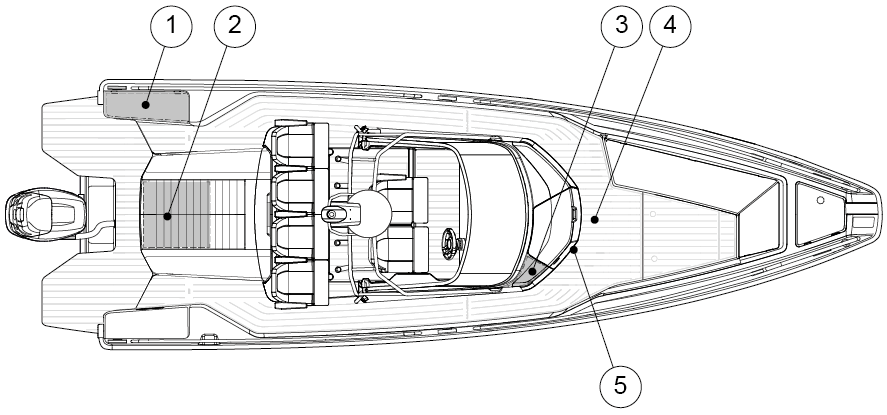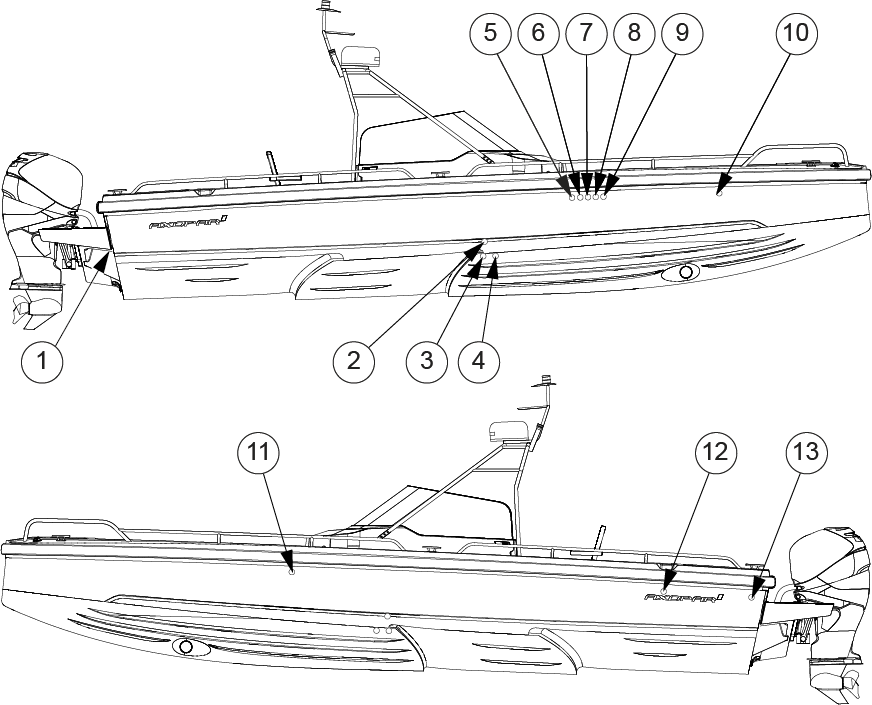The boat is equipped with both manual and electrical bilge pumps. The signs on the boat display the draining area of each pump.
The electric bilge pumps are equipped with a float which triggers them automatically if there is water in the bilge space. The pumps can also be controlled manually from the switches on the steering console.
The manual bilge pump is controlled with its handle, which is located in the port side fender storage in the afterdeck.The purpose of the manual bilge pump is to drain the aft bilge room.
The electric pumps are submersible. One of them is located under the berth of the aft cabin and access to pump can be get by opening floor hatch. Another bilge pumps is located front of toilet and access to pump can be get by opening toilet front wall. The bilge water level should remain at a minimum.
The output of each automatic bilge pump is 41 liters (11 gallons) per minute. The manual bilge pump’s output is 33 liters (9 gallons) per minute.
Avoid pollution!
Since the bilge system comprises of several automatic and manual pumps that cover all areas of the boat, the risk of accidental discharge of contaminated water by automatic pumps should be minimized. The boat owner and user shall mitigate the risk by checking the bilge water regularly for contaminants such as oil, diesel, and glycol. There is a sign in the boat indicating the draining area of each pump respectively.
Do not run dry for long time. The pump will be damaged.
-
Check the functionality of the bilge pumps regularly by manually activating them.
-
Remove any waste from the intakes.
The combined capacity of the bilge system is not designed to pump out the boat in the event of hull damage.
The pumps are by default in the automatic mode and pump out the bilge once the float-switch is triggered. The pumps can also be started manually from the boat’s main control panel.
The bilge system is not designed for damage control.
Check the function of all bilge pumps at regular intervals. Clear pump outlets from debris.
If seacocks are fitted in the fore and aft peak bulkheads, they shall be kept closed and shall only be opened to let water drain into the main bilges.

- (1)
-
Handle bilge pump
- (2)
-
Aft electric bilge pump
- (3)
-
Front electric bilge pump
- (4)
-
Hull through valves
- (5)
-
Deck draining pump
The figure shows the seacocks and inlets through the side. Always check in the spring when launching that the inlets through the side and bottom are tightly closed.

- (1)
-
Deck draining holes and valves
- (2)
-
Septic tank draining seacock
- (3)
-
Sinks draining seacock
- (4)
-
Toilet seat inlet seacock
- (5)
-
Deck draining pump outlet
- (6)
-
Shower pump outlet
- (7)
-
Front bilge pump outlet
- (8)
-
Septic tank ventilation
- (9)
-
Fresh water tank ventilation
- (10)
-
Diesel tank ventilation
- (11)
-
Heater exhaust
- (12)
-
Manual bilge pump outlet
- (13)
-
Aft bilge pump outlet